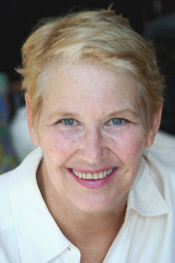
By Mikaila Gawryn
Earth Ministry Outreach Associate
"Learn about mangrove swamps -- shrimp." These words were scrawled across the page in bright orange pencil. Various other random statements swam in my mind as I sat on the wood floor. Dust particles swirled heavily in the lemon colored light of early summer, and I looked out across the mess of a bedroom that I had grown up in. Old t-shirts and a boom box lay slumped atop an uneven pile of papers. I was packing for the move my parents were making to Nevada.
After my first year of college, a year full of studying environmental issues (read: lots of talking, little doing) the need to take personal action had hit a souring pitch. Inconveniently, the height of my restlessness arrived at the exact moment I had to clean out my old bedroom. So of course, I didn't clean. Instead, I began writing.
I wrote in big letters, fast and unwieldy scribbles, simply to express the hunger for what felt like my first environmental manifesto: "Become comfortable with public transportation. Try eating less meat. Learn about mangrove swamps -- shrimp. Does sustainable sushi even exist?" The list went on.
I knew what I wanted to do. I wanted to live differently. It felt electrifying.
As the daylight hours sifted into evening I continued to ignore my room until finally I had filled the page . . . my manifesto. Fighting the urge to book a flight to Germany and nail my announcement to a door, I surveyed my work. I knew what I wanted to do, I wanted to live differently. It felt electrifying.

Since writing this first manifesto I have had the opportunity to check off a number of items from the list. I was given the opportunity to study the impact of the sushi industry on Blue Fin tuna populations. I have taken the Seattle metro in snow, rain and even sun. I have also not completed many of my goals. Calling my legislator on a weekly basis has never come easily, but I'm still working on it. (This angry leaf suggest calling your legislator too.)
Over time I have written more manifestos. Added to my lists have been less tangible items, such as "Don't try to be perfect" and "Seek sources of empowerment." Other ideas, like making that phone call, stay on the list.
A mentor of mine once said that there is power in writing down a goal, tacking it to the wall and simply looking at it every day. He said that this helps him to keep his objective clear in mind. Have you ever created an environmental manifesto of your own, or perhaps a justice manifesto or a peace manifesto? What are you passionate about? Write it down and tape it to your wall. Keep it around and in time rewrite it if you need to. If you haven't ever done this I encourage you to consider it. And who knows? Maybe your manifesto will start a revolution.











